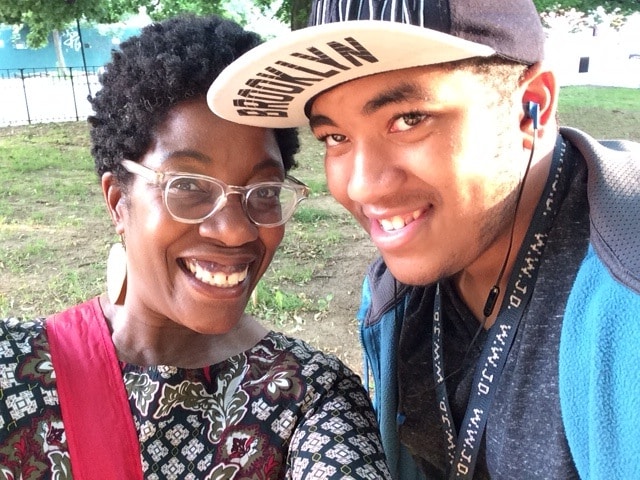
FREDERICKSBURG, Va. (WOMENSENEWS)–The mood for the Women’s World Cup championship game at Home Team Sports Bar here on Sunday was like a college football bowl, NCAA basketball playoff or NFL Sunday. Not quite a Super Bowl, but close.
In addition to America’s usual soccer audience – families with children on club teams, high school and college players, foreigners or first-generation Americans–the place was packed with the guys–white, brown and black–who often dominate sports bar games. They monopolized standing room plazas below elevated television screens.
Many wore national colors, but some sported jerseys of the USA Women’s National Team or its big stars–Abby Wambach, Hope Solo, Alex Morgan, Lauren Holiday, Megan Rapinoe and, above all, Carli Lloyd. They knew their names.
They knew the game too, bellowing like European or South American crowds at promising crosses or tricky dribbling moves. They even appreciated change-of-field long passes or intricate series of tight, short passes.
Manhattan Borough President Gale Brewer is pushing for a ticker tape parade for the team, an honor that would signal that the women’s global game has really come of age. But crowds in bars like this are also a serious indicator.
Moreover, the female athletes won not only their biggest Cup and largest audience, but also their most significant battle of the Cup, their protest against having to play–unlike any male Cup team in history–on hot, fatiguing, injury-prone artificial turf. While nothing changed for 2015, the Federation of International Football Associations conceded that no future Cup, male or female, will ever be played on artificial turf.
High school seniors Kylie McKeen and Victoria Bailey, from neighboring Spotsylvania, watched bemusedly over their dates’ shoulders. They had played school and club soccer together and both expected to play for colleges this fall. Kylie went to Montreal to see the France-Germany game.
From their perspective, the women’s game has elevated quality for some years now.
Recognition, Not Improvement
The Cup’s contribution is recognition, not improvement. But they were skeptical that the guys’ enthusiasm would translate into more money for professional players, teams or leagues around the world.
It might, however, in my view, increase domestic budgets and audience for girls’ clubs, high school and college women’s teams. American universities are increasingly the world’s soccer developmental leagues. England star Lucy Bronze plays for North Carolina, Canada’s Kadeisha Buchanan plays for West Virginia and the Mexican Perez sisters, Amanda and Veronica, play for Washington.
When Carli Lloyd put away the game in the first five minutes with two outstanding goals, the dudes exploded in high fives, fist punches, chest bumps and bear hugs. In the 16th minute–two after Lauren Holiday netted USA’s third–Lloyd spotted the Japanese goalkeeper way off her line and scored for a third time, a spectacular strike from midfield. The men broke into a kind of thumpy rave to "Car-li, Car-li, Car-li."
America has a new heroine. She’s a 32-year-old, hard-running, gritty-tackling, pinpoint-passing midfielder, with a knack for rising to challenges and scoring in the biggest games.
Elsewhere, things are not so sweet. Over 30 websites combine "women soccer" and "hot" and feature international stars in various modes of undress. The English national Football Association was pressured to take down its tweet welcoming its team to returning roles as mothers and daughters. The Norwegian women’s team made a satirical video mocking male audience priorities.
Watching the men celebrate the final whistle, McKeen and Bailey smiled.
Won’t this mean anything for the women’s game?
Maybe in the USA, they agreed, where youth clubs and college sports are big deals. Not so much anywhere else.
How about Cup newcomers Thailand and Ivory Coast?
Nah.


